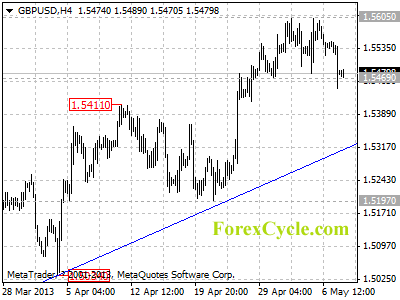By MoneyMorning.com.au
Back in 1992, Gina Rinehart’s wealth stood at $75 million.
By 2009, it had INCREASED 38-FOLD to $2.9 billion!
Not bad. But she had only just got started.
Today her personal wealth measures $29 billion.
Put another way, over 21 years her wealth has increased at an average growth rate of 32.8% per annum.
It’s hard to think of a sector outside of resources that can create such vast personal wealth so rapidly.
Not even the best-performing hedge fund manager in history can compete. Stan Druckenmiller was close, with average gains of 30% per annum over roughly the same time frame, but Rinehart is ahead by a nose. More to the point, the wealth is hers, not a fund’s.
My point is this: if you know how to navigate the resource sector, there’s simply no other wealth generator like it…
Rinehart’s is an exceptional story. When it comes to gains like that, not many can compete with the richest woman in the world.
But it’s not just the super-rich that have benefitted of course. The whole country has ridden commodities’ coattails for years.
Australia is responsible for nearly a quarter of global mining revenue, meaning it generates more mining wealth than any other single country. Then consider that is spread across a population of just 23 million.
Thanks in no small part to the resource sector, Australia’s GDP (at purchasing power parity) has soared to $39,465 per person. This means we are now ahead of long-time rivals in the mother country, who’s GDP per person is at $36,510. Unlike Australians, my fellow poms don’t have a quarry in the backyard to lean on when times get tough.
This Resource Boom Isn’t Over
And there may be plenty of profits from our ‘quarry’ ahead. Last week I wrote to you about how the commodity super-cycle may only be halfway through. After 14 years of rising commodity prices, investors are asking if there can be more to come. Well I see another sixteen years.
My reasoning is that there are almost four billion people across China, India, Indonesia and other ASEAN (Association of Southeast Asian Nations) members that are enjoying rapid economic growth.
And they are all in the process of raising their living standards. And don’t forget Japan, which is our second largest trading partner. Construction from the 2011 earthquake is warming up. Its economy is slipping back to growth.
This will all require vast amounts of commodities over the long-term, while mining investment is slowing. So it’s not hard to imagine strong commodity prices over the next ten years or more.
Last week I talked about the Kondratiev cycle, which suggests commodity price moves form a sixty-year cycle. This chart (via ETFS) originally published by the United Nations Department of Economic and Social Affairs, tracks the sixty-year super cycle for commodity prices. It neatly fits Kondratiev’s theory.
The previous lows were in 1879, then sixty years later in 1939, and then most recently in 1999.
The highs were at thirty-year intervals between these dates. If the pattern continues, then the next peak won’t be for another sixteen years, in 2029!
It’s a very exciting investment opportunity. But start talking about resource investments, and most investors will glaze over!
The main reason is that resource stocks have fallen for 25 months now. Since April 2011, the metals and mining sector has tumbled by 40%. That’s enough to make anyone less than excited.
Compare that to the current market favorite, the financial index (XFJ), which is up by 40% in the last year alone.
Value Investors, Look Here
But the market is behaving as if it’s all over for mining. Nothing could be further from the truth. I think you’d need to be pretty brave, buying financial stocks after such a move, particularly when the sector is at its most overbought in 20 years!
In contrast, resource stocks are so cheap they’re back to GFC levels. As frustrating and ridiculous as it is, the important point is that it’s an exceptional opportunity. You can get depressed at the state of the market, or you can look for the kind of opportunities that made investors very wealthy last time the market was this cheap.
We may have even seen the bottom already, though I’d suspect it could take a few months of volatility to find the bottom and start recovering. This gives us time to scan for the best stocks to ride it.
It could be sooner. We’ve certainly heard some warning shots to stay alert in the last few days.
For starters, on Friday night, the copper price jumped by 6.8% in one session. This was its biggest jump in more than 18 months. It also means that over a few days, copper has climbed by 10%. US jobs numbers were the catalyst.
Moves like this are not normal. This kind of volatility can mark turning points for major trends.
The Australian resource sector has jumped since then, with the metals and mining index up 6.1% in three days.
So while may still be early days, it’s time to start thinking about how to play what I believe is an inevitable resource rebound rally. More on this later in the week.
Dr Alex Cowie
Editor, Diggers & Drillers
Join me on Google+
P.S. It has been a rotten two years for resource stocks. While the main index has gained 23% since mid-2011, the mining index has lost 35%. In today’s Money Morning Premium, Kris spotlights two blue-chip resource stocks investors should consider adding to their portfolio, and explains why small-cap resources stocks are a must-have too. Click here to upgrade now.
From the Port Phillip Publishing Library
Special Report: TORRENT SIGNAL 3
Daily Reckoning: The Stock Market is King and Cash is the Joker
Money Morning: 36% Potential Upside for Australian Stocks Over the Next Two Years
Pursuit of Happiness: The Government’s Idea of Wealth Creation
Diggers and Drillers:
Why You Should Invest in Junior Mining Stocks



